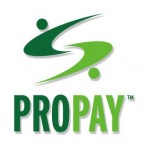Businesses selling merchandise or receiving online payments need a way to collect and accept money. Merchant accounts are one option for people or businesses wanting to process payments such as credit and debit cards. Many companies offer merchant accounts. However, there are two popular merchant accounts, PayPal and ProPay. Both ProPay and PayPal have things in common. For instance, they are both third-party merchant services. Yet these third-party services differ.
ProPay
 A ProPay merchant account processes credit and debit card payments. The merchant doesn’t require businesses to create a ProPay account to receive payments. Thus, sellers can receive money faster. The downside, however, of using ProPay is that it doesn’t have a uniform protection policy. Instead, the merchant is bound by the individual terms of protection policies provided by buyers’ credit and debit cards. Another difference between the two merchants is fees.
A ProPay merchant account processes credit and debit card payments. The merchant doesn’t require businesses to create a ProPay account to receive payments. Thus, sellers can receive money faster. The downside, however, of using ProPay is that it doesn’t have a uniform protection policy. Instead, the merchant is bound by the individual terms of protection policies provided by buyers’ credit and debit cards. Another difference between the two merchants is fees.
ProPay does charge fees. For example, the merchant charges an annual fee for using its service and per-transaction fees. The per-transaction fee may include a percentage as well as the fee. The annual fee, however, may include a refund if businesses process a certain dollar amount in approximately six months. The fee scale can be a sliding scale depending on the sites it’s used on.
PayPal
PayPal, owned by eBay, provides businesses looking for an alternative to paying fees. In fact, PayPal is cheaper for merchants to use because it doesn’t charge an annual fee. The per-transaction fees are lower too. Unlike ProPay, PayPal’s merchant services require businesses to set up accounts before they can accept any transactions. This can slow down the process of receiving money. Another drawback is that buyers may have to create a PayPal account if they want to purchase items from merchants with PayPal as their only way accepting money.
Conclusions
Businesses interested in either merchant account may have to consider their customers. For instance, Paypal is consumer-friendly. PayPal works by obtaining the money from buyers and transferring it to businesses without entering their debit or credit card numbers—because they have accounts already setup. Customers may like ProPay because it offers better customer service items instead of an automated system.
Regardless of which third-party service companies decide to use, they provide different options and features.














The initial shock is weinarg off and I am humbled and blessed to have been chosen to receive this wonderful blessing! Thank you to all the sponsors for your generosity! Homeschool Giveaways, Eternal Encouragement, Motherhood on a Dime, So You Call Yourself A Homeschooler?, Hearts At Home, Free Homeschool Deals, This Reading Mama, Abundant Life, The Encouraging Home, Homeschool Commons, Susie Homeschooler, Blessed Beyond a Doubt, and {School} Days Gone By – Thank You and God Bless You this Christmas!